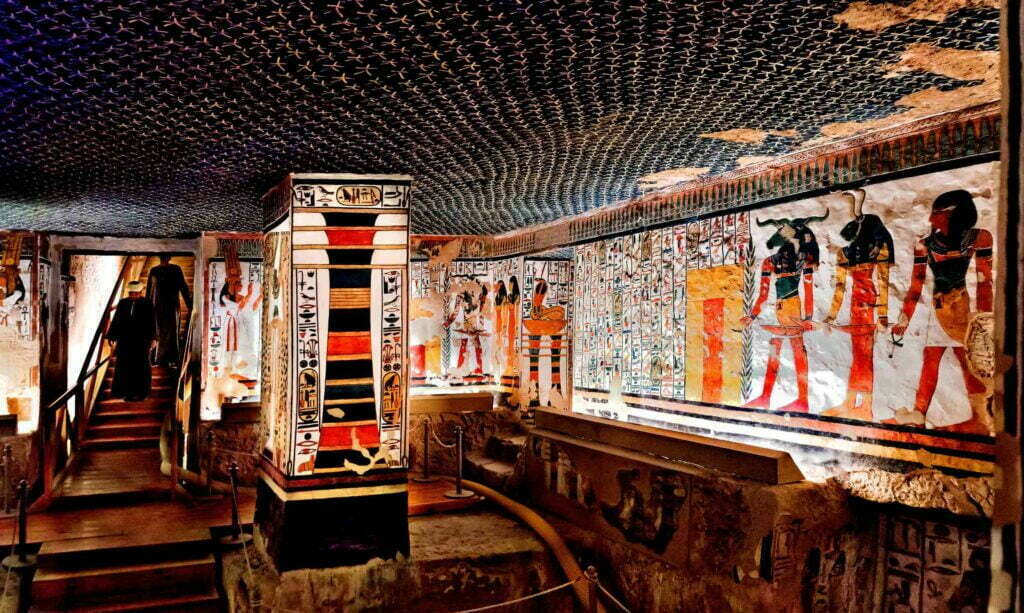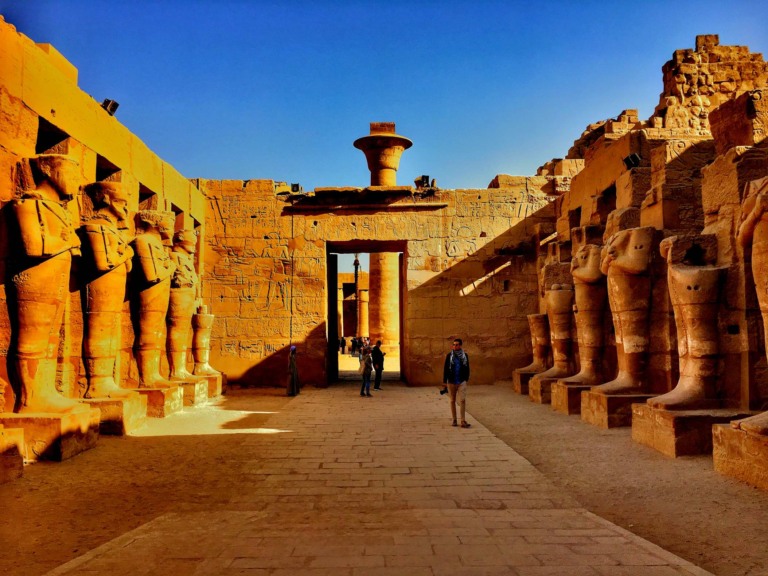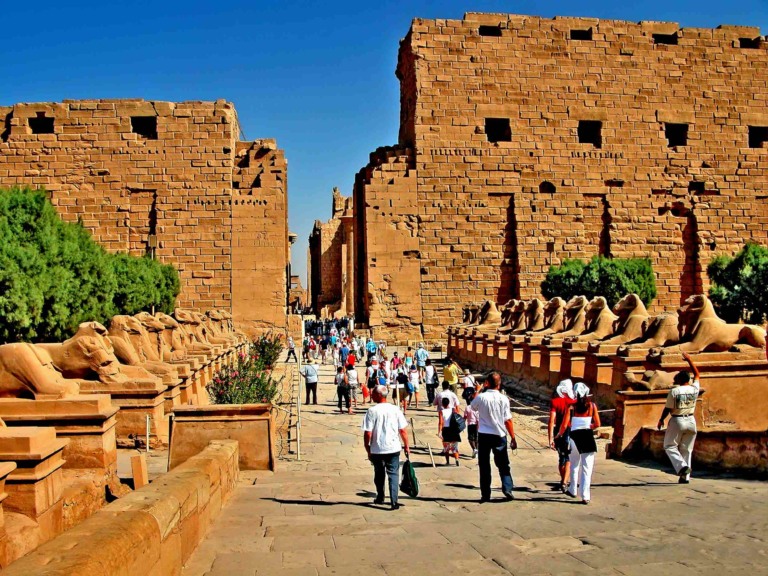The Valley of the Queens, also known as Biban el-Harim in Arabic, is a significant archaeological site located on the west bank of the Nile River in Luxor, Egypt. It is situated near the Valley of the Kings and is renowned for being the burial place of many queens, princesses, and other members of the royal families of ancient Egypt.
Valley of the Queens Facts
This site, part of the ancient Theban Necropolis in Egypt, shares UNESCO World Heritage status with neighboring sites like the Valley of the Kings, Luxor, and Karnak, a recognition received in 1979. It served as the final resting place for queens and select royal children during the 19th and 20th dynasties of ancient Egypt, spanning from 1292 to 1075 BC. Here are some key points about the Valley of the Queens:
1. Historical Significance: The Valley of the Queens served as the primary burial site for the wives and female relatives of pharaohs during the New Kingdom period of ancient Egypt, roughly from the 16th to the 11th century BCE. It is part of the larger Theban Necropolis, which includes the Valley of the Kings and other nearby burial sites.
2. Tombs: The valley contains numerous rock-cut tombs, similar in style to those found in the Valley of the Kings. These tombs were hewn into the rock faces of the surrounding hills and feature corridors, chambers, and burial shafts. The walls of these tombs are adorned with intricate paintings and hieroglyphics.
3. Queens and Princesses: While the valley is known as the Valley of the Queens, it also contains the tombs of princesses, high-ranking officials, and other members of the royal court. Some of the most notable queens buried here include Nefertari (the principal wife of Ramses II) and Tyti (the wife of Ramses III).
4. Decoration: The tomb decorations often depict scenes from the life of the deceased, religious rituals, and their journey through the afterlife. The paintings provide insights into the religious beliefs and customs of ancient Egypt.
5. Rediscovery: Many of the tombs in the Valley of the Queens had been looted in antiquity, similar to tombs in the nearby Valley of the Kings. However, some tombs, including that of Nefertari, were discovered with their treasures largely intact.
6. Conservation: Efforts have been made to conserve and restore the tombs in the Valley of the Queens to protect their valuable artwork and structures. Some tombs are open to visitors, while others may have restricted access to prevent damage.
7. Tourism: The Valley of the Queens is a popular destination for tourists and archaeology enthusiasts. Visitors can explore several of the tombs, appreciating the historical and artistic significance of this site.
8. Archaeological Discoveries: Ongoing excavations and research in the Valley of the Queens continue to reveal new insights into the lives and rituals of ancient Egyptian royalty. New tombs and artifacts are periodically discovered, contributing to our understanding of this ancient civilization.
The Valley of the Queens stands as a testament to the important role of royal women in ancient Egypt and provides a glimpse into the art, culture, and religious beliefs of the New Kingdom period. It remains a fascinating destination for those interested in Egypt’s rich history and archaeology.
Valley of the Queens Location
9. Location: Positioned approximately 1.5 miles (2.4 km) to the west of Madinat Habu, where Pharaoh Ramses III found his burial place from 1187 BC to 56 BC, the Valley of the Queens is marked by over 90 graves dedicated to these royal women. The typical tomb structure includes an entrance path, small chambers, and a central sarcophagus room. Among the notable queens interred here are Nefertari, the favored queen of Ramses II; Tyti, a queen from the Ramesside period; and princes like Khaemwese and Amunherkhepshef.
10. Tombs open to the public: While numerous tombs have been identified, only four are open to the public. Among these, Nefertari’s tomb stands out as one of the most magnificent in Egypt’s Valley of the Queens. Nefertari Meritmut, the principal wife of Ramses the Great, holds a prominent place in Egyptian history.
Revered as “a lovely buddy, Mut’s favorite,” she received a comprehensive education and actively participated in political affairs. Her tomb, known as “the place of beauty” or “Ta-Set-Neferu,” reflects her significance. Upon entering this splendid tomb, titled “the one for whom the sun shines” by Ramesses, visitors are greeted by walls adorned with exquisite paintings and ceilings adorned with golden stars.
11. Valley of the Queens Tour: Nefertari’s tomb is celebrated not only for its grandeur but also for its well-preserved reliefs, making it a worthy visit. For those concerned about ticket prices for the Valley of the Queens, exploring the tomb of “Amunherkhepshef” offers a cost-effective yet rewarding alternative.
12. Mode of Transportation: Located in close proximity to the Valley of the Kings, Memnon’s Colossi, and Hatshepsut’s Temple, the Valley of the Queens lies on the opposite bank of the Nile from Luxor. Travel options include hiring a taxi, a car, or even a bike. Additionally, guided tours, which often encompass entrance fees, hotel transfers, and English-speaking guides, are available for a comprehensive exploration of the site. The Valley of the Queens is equipped with facilities such as restrooms and a nearby store, along with free parking.
13. Valley of the Queens Entrance Fee: Opening hours typically range from 6 a.m. to 5 or 7 p.m., contingent on the season. Entrance fees are approximately 50 Egyptian pounds ($6) for adults and 25 Egyptian pounds ($3) for students, granting access to tombs like Amunherkhepshef (QV52), Khaemwaset (QV44), and Tyti (QV52) with a single ticket.
Nefertari and Nefertiti
14. Is Nefertiti the same person as Nefertari? It’s important to note that Nefertari (Nefertari Meritmut) and Nefertiti (Neferneferuaten Nefertiti) are distinct historical figures. Nefertari, the beloved wife of Ramses II, held a position of great importance, was engaged in diplomatic matters, and possessed the ability to read and write hieroglyphs. In contrast, Nefertiti, the wife of Akhenaten, wielded significant influence during her husband’s reign and is believed by many to have briefly ruled as a pharaoh following Akhenaten’s death, before the ascent of Tutankhamun.






